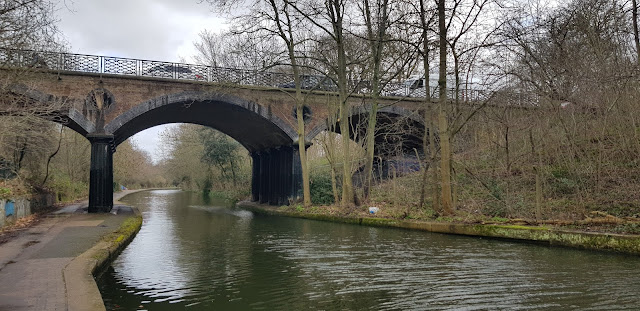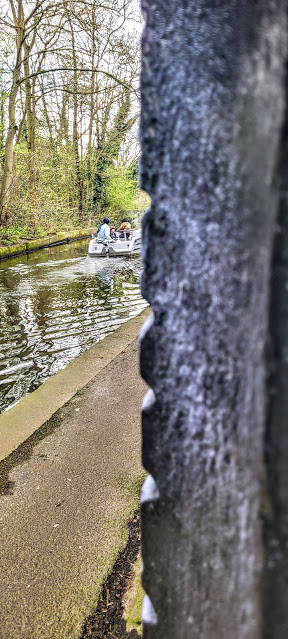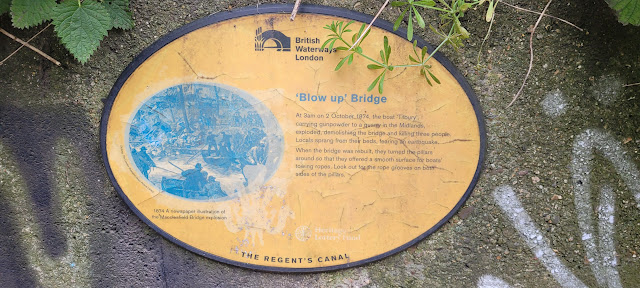 |
| Approaching the 'Blow Up' Bridge, from the west. |
I have walked Regent's Canal on many an occasion, passing beneath bridges and through tunnels, but one bridge stands out from the rest. Not because it is ornate or is the oldest, but because it had to be replaced after it was blown up, by accident.
The barge 'Tilbury' was one of six barges being pulled along Regent's Canal by a steam tug, destined for the Midlands. Its cargo contained coffee, nuts, barrels of petroleum and about five tons of gunpowder. It is believed that one of the people onboard 'Tilbury' struck a match, just before 05:00 on the morning of Friday October 2, 1874, just as they were passing below the Georgian Macclesfield Bridge.
The resulting explosion destroyed the brickwork of the bridge, but left its cast iron columns intact. The 'Tilbury' was destroyed and another barge in the fleet sank. Black smoke could be seen for miles around.
 |
| Macclesfield Bridge in the winter. |
The explosion could be heard over 12 miles away and windows were broken, from the shockwave, a mile away. Homes nearer to the canal had their roofs damaged, while others sustained damage to their brickwork. A gas main and a water main were both severed, too. Dead fish rained down on the West End, while the animals at the nearby London Zoo began to make a raucous noise. Residents in the area feared that an earthquake had struck.
Fortunately, the explosion happened in a cutting, forcing the explosion to be carried along the canal, rather than in all directions, which would have resulted in more damage and possibly more fatalities.
The Police, Fire Brigade and members of the Horse Guards, based at Regent's Park, were soon on the scene. Three bodies were recovered that afternoon and, by the following Tuesday afternoon, the canal had been cleared of the debris from the bridge and barges, allowing for the canal to be used again.
The bridge was rebuilt and its columns, which had survived the blast, were turned so that the smoother sides faced the water, which is why there are rope marks on both sides of the column today.
 |
| Rope marking in one of the cast iron columns. |
Considering the events of that morning, there is only a small plaque that recounts the events of that day.
 |
| The small but informative plaque. |
I included details of the 'blow up bridge' in a talk I gave about a walk from Paddington to Regent's Park. Fascinating, if awful, story.
ReplyDeleteIt is an awful story. I am surprised that the only plaque at the bridge is as small as it is and not very well placed.
Delete